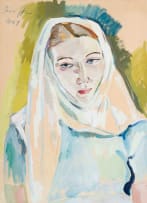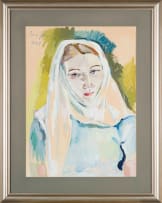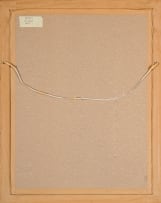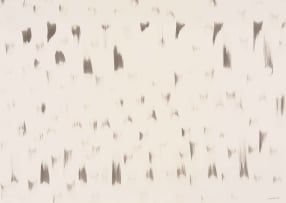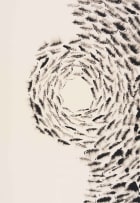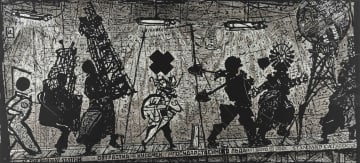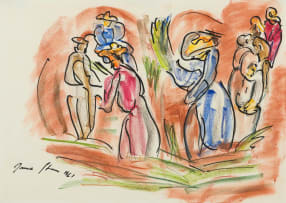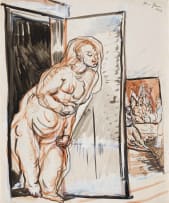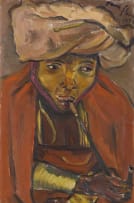Evening Sale
Live Virtual Auction, 17 September 2024
Evening Sale: Modern and Contemporary Art
Incl. Buyer's Premium & VAT
About this Item
signed and dated 1947
Notes
Irma Stern frequently deliberated on faith and spirituality in her work. Shortly after moving into The Firs, her home and studio in Rosebank, in 1927, Stern decorated a cupboard with motifs linked to the late-medieval religious pageant of the Danse Macabre. Her portraits of Cape and Zanzibari Muslims from the 1930s and 40s include various depictions of spiritual leaders and people at prayer. Christian subjects and themes decisively entered her repertoire from the late 1940s. Stern depicted Catholic festivals in France and Spain, made annunciation paintings, and even produced an unusual flower still life in 1947 that incorporates a Pieta motif.
This attractive gouache portraying a demure young woman, her blue eyes confidently meeting the painter's gaze, recalls one of the most durable icons of Western painting: the Virgin Mary. Stern's depiction invokes various iconographic traditions linked to Christendom and its westward expansion. The blue mantle, for instance, derives from Byzantine-period venerations of the Madonna, while Stern's emphasis on youth and beauty is more closely aligned with Renaissance tropes. As a dutiful museumgoer, worldly reader and also avid collector of votive objects and religious artworks, these facts would have been second nature to Stern.
Stern produced a small suite of works invoking the Virgin Mary in 1947. They include the large oil compositions French Girl (1947) and Mother and Child (1949). All of these works feature the same model. Stern tended to use gouache, an opaque water-based pigment, to produce preparatory sketches. The clarity of expression and vivacity she achieved with the medium often culminated in startlingly autonomous works. A determined painter of faces, Stern renders her subject here with a mixture of fastidious mark-making and casual notation. In her larger oils the model looks askance, but here she frontally regards Stern. Who is this striking young woman?
Elsabé Einhorn, nee Kuys, was a 26-year-old mother when she sat for Stern. Married to Dr Heinz Einhorn, a German émigré and electrical engineer who enabled the lighting of Table Mountain, Einhorn completed her doctorate in French literature at the University of Cape Town in 1952.1 She lectured French at the same university for 34 years. In 1974, Einhorn published a handbook on Old French that was reprinted many times. In 2004, at the age of 83, she published a modern English translation of Old French epic poems involving William of Gellone, a defender of the Christian faith from a time when piety was an expression of social distinction. There is a striking symmetry between the model for Stern's gouache, Einhorn, and her lifelong intellectual interests.
1. Gill Einhorn (2004) 'Historical highlight', UCT News, 11 October, online, https://www.news.uct.ac.za/article/-2004-10-11-historical-highlight, accessed 12 August 2024.
Provenance
A gift from the artist to Elsabé Einhorn in 1947 and thence by descent to the current owner.

